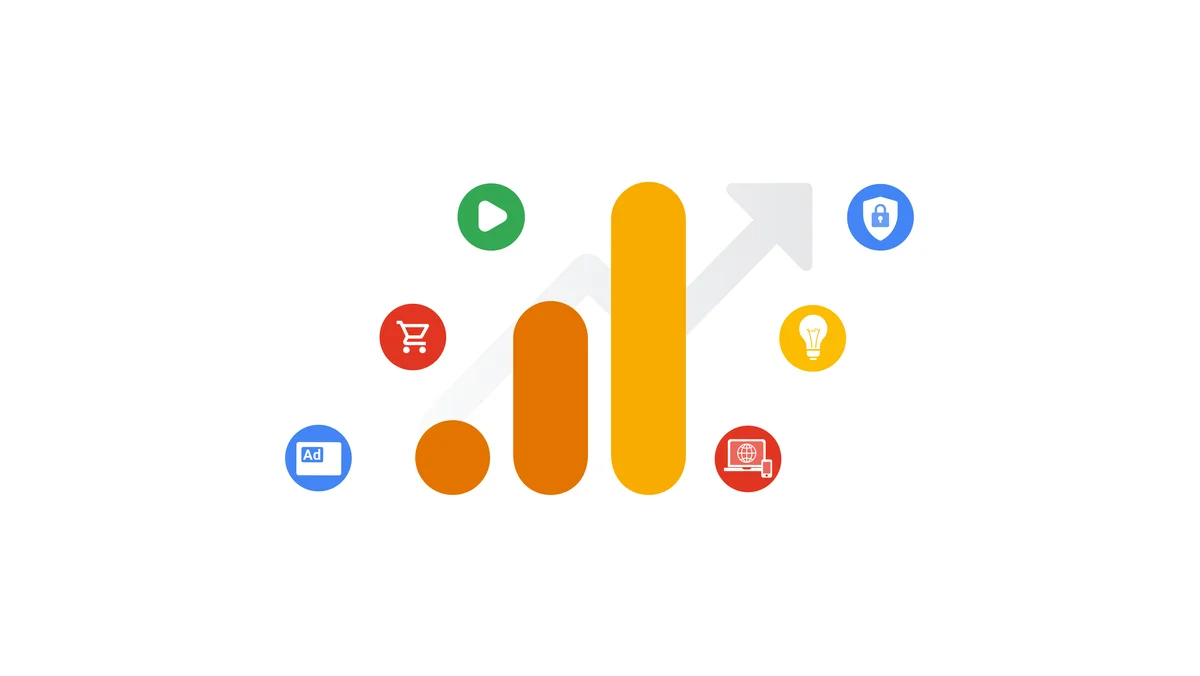Key Factors To Consider for Marketing Professionals: When Does the Google Analytics Tracking Code Send an Event Hit to Analytics?
Key Factors To Consider for Marketing Professionals: When Does the Google Analytics Tracking Code Send an Event Hit to Analytics?
Blog Article
Enhance Your SEO Technique With Effective Google Analytics Monitoring Code
Integrating Google Analytics tracking code into your search engine optimization approach is a critical step towards accomplishing measurable results. Appropriate implementation not just provides a clear home window into customer habits and web traffic resources however also highlights crucial performance indicators that can inform your content strategy. By recognizing metrics such as natural web traffic and conversion prices, you can identify areas for optimization. Nevertheless, the true possible hinge on exactly how these insights can be leveraged to refine your approach. What specific techniques can you take on to maximize the influence of this information on your search engine optimization efforts?

Understanding Google Analytics Essentials
To effectively utilize Google Analytics for SEO, it is necessary to understand its fundamental concepts. Google Analytics works as a powerful tool for monitoring and examining web site web traffic, giving understandings that are vital for maximizing search engine performance. At its core, the system allows individuals to keep track of individual actions, traffic sources, and vital efficiency signs (KPIs) such as bounce rates and session periods.
Familiarity with the user interface is crucial. The Audience area gives demographic understandings, assisting to customize material to target users effectively.
Recognizing metrics such as natural website traffic volumes and conversion prices is vital for assessing search engine optimization performance. Inevitably, grasping these basics enables electronic marketing professionals to harness the complete potential of Google Analytics, driving notified choices that boost total SEO strategies. By establishing a solid structure, companies can properly assess their performance and determine opportunities for enhancement in their online presence.
Establishing Tracking Code
Properly establishing the tracking code is essential for precise data collection in Google Analytics. The very first step entails developing a Google Analytics account and property, where you will get an one-of-a-kind monitoring ID. This ID is vital for linking your website's information to your Google Analytics account.
Once you have your tracking ID, integrate the monitoring code bit into your website's HTML. This is normally put in the header section of each web page to guarantee it tons early in the page providing procedure. If you're making use of a Content Monitoring System (CMS) like WordPress, several plugins streamline this process, permitting you to include the tracking code without direct HTML editing and enhancing.
After implementing the tracking code, it is essential to examine its functionality. You can use the Google Tag Assistant device to validate if the monitoring code is properly installed and working. In addition, keep track of the real-time coverage attribute in Google Analytics to verify that data is being accumulated properly.
Making certain that the tracking code is correctly set up lays the structure for effective data analysis, enabling you to make informed decisions to improve your SEO strategy and overall internet site performance.
Secret Metrics to Display
Recognizing essential metrics to check is essential for understanding the effectiveness of your SEO technique through Google Analytics. By concentrating on specific information points, you can gauge the effect of your optimization efforts and make notified decisions to improve performance.
Among the primary metrics to track is organic website traffic, which indicates the variety of site visitors reaching your website with online search engine. This statistics reflects the overall wellness of your search engine optimization approach. Next, check the bounce price, which shows the percent of site visitors that leave your site after checking out just one page. A high bounce price may signify that your content is not meeting user assumptions or that your landing pages require enhancement.
Additionally, think about tracking conversion rates, as these metrics expose just how well your website satisfies its service objectives, such as producing sales or leads. Key words positions are likewise important; surveillance adjustments in keyword placements assists examine the efficiency of your targeted SEO initiatives. Ultimately, analyze the average session duration, which indicates customer involvement and web content significance. By very closely following these essential metrics, you can get beneficial understandings into your SEO strategy's efficiency and identify locations for enhancement.
Studying Individual Behavior
Understanding customer behavior is essential for fine-tuning your Search engine optimization approach and optimizing site efficiency. Google Analytics gives a wealth of information on user interaction metrics, such as bounce rates, time on site, and web page views per session.
Additionally, tracking user circulation can expose typical navigating paths, highlighting possible bottlenecks or areas for improvement. Understanding the demographics, interests, and geographical locations of your site visitors enables for more tailored material that speaks with their needs. Utilizing click resources division attributes in Google Analytics further enhances your capacity to assess customer actions by enabling you to compare various target market teams.
Additionally, keeping track of conversion prices and customer activities can supply understandings right into the efficiency of your calls to action and overall site design. This holistic sight of individual actions is necessary for making educated decisions that improve individual experience and drive greater involvement, eventually contributing to best site enhanced search engine optimization efficiency.
Leveraging Insights for Search Engine Optimization
Consistently leveraging insights gotten from customer actions analysis can considerably improve your search engine optimization efforts. By utilizing Google Analytics, you can determine essential metrics such as bounce rates, session period, and individual flow, which reveal how site visitors connect with your material. These insights allow you to pinpoint locations needing enhancement, such as high exit pages or underperforming keywords.

In addition, tracking organic traffic resources offers clarity on which channels are most efficient, permitting you to assign sources tactically (when does the google analytics tracking code send an event hit to analytics?). By assessing conversion prices together with traffic data, you can determine which pages drive real business results, refining your SEO strategy further
Incorporating these insights into your content strategy not just boosts presence but additionally promotes an extra user-centric approach. Ultimately, a data-driven search engine optimization strategy notified by analytics not only increases positions yet additionally aligns your objectives with user assumptions, resulting in sustained development and interaction.
Final Thought
Reliable execution of Google Analytics tracking code substantially boosts a search engine optimization strategy by giving important understandings right into user behavior and website traffic sources. Monitoring vital metrics such as natural traffic, bounce prices, and conversion prices assists in the recognition of enhancement locations. In addition, assessing customer demographics and engagement metrics enables a much more targeted material method. Eventually, leveraging these understandings adds to fine-tuning search engine optimization efforts, driving more pertinent traffic, and improving overall site performance.
Integrating Google Analytics tracking code into your Search engine optimization technique is a critical step toward achieving measurable outcomes. At its core, the system enables users to keep track of customer actions, web traffic sources, and crucial efficiency indications (KPIs) such as bounce prices and session durations.
Comprehending customer see here behavior is vital for improving your Search engine optimization strategy and taking full advantage of site performance.Constantly leveraging insights gotten from customer habits analysis can dramatically boost your Search engine optimization initiatives.Efficient application of Google Analytics tracking code dramatically boosts a Search engine optimization strategy by providing vital understandings into user behavior and web traffic resources.
Report this page